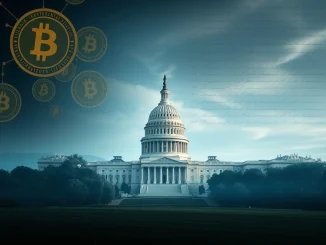
The world of digital assets is constantly evolving, and with that evolution comes the increasing need for clarity. For anyone involved in cryptocurrency or blockchain technology, understanding the regulatory landscape is paramount. Recent statements from U.S. SEC Chairman Paul Atkins highlight a significant focus: establishing a firm SEC digital asset regulation framework. This signals a potential shift towards more defined rules governing this innovative space.
Why is a Crypto Regulation Framework So Important Right Now?
The digital asset market has grown exponentially, attracting millions of investors and fostering new business models. However, this rapid growth has also exposed areas lacking clear guidelines, leading to uncertainty for both market participants and regulators. A well-defined crypto regulation framework is crucial for several reasons:
- Investor Protection: Clear rules help safeguard individuals from fraud, manipulation, and opaque practices common in unregulated markets.
- Market Integrity: A robust framework can promote fair and orderly markets, building confidence among institutions and retail investors alike.
- Innovation Clarity: Defined boundaries can actually foster innovation by providing businesses with a predictable environment to build and operate within, reducing legal ambiguity.
- Preventing Illicit Activity: Regulation can help create mechanisms to prevent digital assets from being used for money laundering, terrorist financing, and other illegal activities.
Chairman Atkins’ statement, reported by Watcher Guru on X, emphasizes this need for a ‘firm regulatory foundation.’ This suggests the SEC recognizes the current gaps and is prioritizing efforts to address them.
What Could “Firm Digital Asset Rules” Look Like?
While the exact shape of future digital asset rules remains to be seen, a comprehensive framework would likely touch upon several key areas. Based on past discussions and regulatory actions, potential components could include:
| Area | Potential Regulatory Focus |
|---|---|
| Asset Classification | Determining which digital assets are securities, commodities, or something else entirely. |
| Exchanges & Trading Platforms | Rules around registration, market surveillance, custody, and operational standards. |
| Issuers & Offerings | Guidelines for initial coin offerings (ICOs), security token offerings (STOs), and other methods of raising capital using digital assets. |
| Custody & Wallets | Requirements for entities holding digital assets on behalf of others. |
| Decentralized Finance (DeFi) | Addressing regulatory challenges posed by automated protocols and decentralized structures. |
Developing these rules is complex. Digital assets often blur the lines between traditional financial instruments, and the technology evolves rapidly. Regulators must balance the need for oversight with the potential to stifle innovation.
What Does This Priority Mean for US Crypto Regulation?
The focus articulated by the SEC Chair crypto discussion indicates that digital assets are high on the regulatory agenda in the United States. While other agencies like the CFTC also play a role, the SEC’s purview over securities means its approach will significantly impact a large portion of the market.
Historically, the US has been criticized by some in the industry for a perceived lack of clarity compared to other jurisdictions that have established specific crypto licenses or frameworks. Chairman Atkins’ comments suggest a move towards providing that much-needed clarity, aiming to create a more predictable environment for businesses and investors operating under US crypto regulation.
This prioritization could lead to:
- Increased enforcement actions against entities operating outside anticipated rules.
- More detailed guidance on how existing securities laws apply to digital assets.
- Potential collaboration with other agencies or legislative efforts to create new laws specifically for digital assets.
For businesses, this means continued attention to compliance and proactive engagement with potential regulatory changes. For investors, it could eventually lead to greater confidence and security in participating in the digital asset market.
Looking Ahead: The Path to a Firm Foundation
Building a ‘firm regulatory foundation’ is not an overnight process. It involves careful consideration, public consultation, and likely iterative adjustments as the market and technology continue to develop. Stakeholders in the digital asset space should closely follow announcements and proposed rules from the SEC and other relevant bodies.
While the path may have challenges, the stated priority of establishing clear digital asset rules offers a glimmer of hope for a more structured and secure future for the crypto ecosystem in the United States. It underscores the growing importance of digital assets in the global financial landscape and the necessity for robust frameworks to support their continued growth responsibly.
In conclusion, SEC Chair Paul Atkins’ focus on creating a firm regulatory foundation for digital assets is a critical development for the industry. It signals a commitment to bringing clarity and structure to a rapidly evolving market, aiming to protect investors, ensure market integrity, and potentially pave the way for more confident participation in the future of finance.



